Hey there! If you've received a letter about a change in your medication, you might be feeling a bit uncertain. It's essential to understand the reasons behind these adjustments and how they can impact your health journey. Taking the time to familiarize yourself with any new prescriptions can make a huge difference in your overall well-being. So, let's dive deeper into what you need to know and why it mattersâread on to learn more!
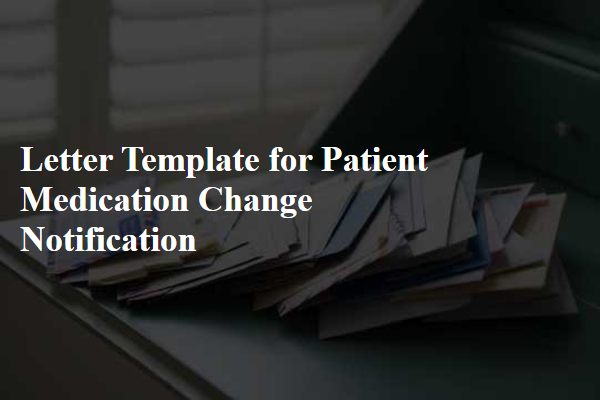
Patient Information
Timely communication regarding medication changes is crucial for patient safety and adherence to treatment plans. Notification documents should include patient information such as full name, date of birth, medical record number, and contact details. The medication change should specify the name of the new medication (e.g., Metoprolol), dosage (e.g., 50mg), frequency (e.g., once daily), and route of administration (e.g., oral). Additional details about the reason for the change, such as improved management of hypertension or side effects experienced with previous medications, enhance understanding. Clear instructions regarding monitoring for side effects or interactions, as well as follow-up appointments, ensure comprehensive patient care. Accurate documentation is essential for healthcare compliance and continuity.
Medication Details
Patients prescribed medication often receive notifications regarding important changes. Recent adjustments might include dosage modifications, changes in administration frequency, or substitutions of one medication for another. For instance, a patient previously on Metformin 500 mg for Type 2 Diabetes may be switched to an extended-release formulation of the same medication to enhance blood sugar control and reduce gastrointestinal side effects. Healthcare providers typically ensure these notifications include clarification on the reasons behind changes, such as improved treatment outcomes or new medical guidelines established in reputable sources like the American Diabetes Association. It is imperative for patients to understand how these changes can impact their health management and any potential side effects that could arise.
Reason for Change
Medication changes often arise from clinical evaluations or new research findings. For instance, a healthcare provider might switch a patient from Metoprolol (a common beta-blocker for hypertension) to Lisinopril (an ACE inhibitor) due to improved evidence suggesting it better addresses heart health in individuals with specific conditions like diabetes. Alternatively, side effects like persistent fatigue might prompt the transition from a medication like Sertraline (an SSRI for depression) to Bupropion (an atypical antidepressant). Regular follow-ups, especially at major healthcare centers like Johns Hopkins or Mayo Clinic, can ensure effective monitoring of the new regimen and adjust as necessary based on the patient's response, especially in chronic illnesses such as hypertension or diabetes.
Instructions for New Medication
Patients prescribed new medications, such as those for managing chronic conditions or post-surgery recovery, must carefully follow the instructions provided by healthcare professionals. Clear labeling on medication containers includes essential information like dosage amounts (usually in milligrams) and timing for administration (such as three times daily). Physicians may recommend lifestyle adjustments to complement the medication, such as dietary changes or specific exercises, all aimed at enhancing the medication's effectiveness. Potential side effects, ranging from mild nausea to more severe reactions, should be discussed to ensure the patient is aware of what to monitor. Regular follow-ups, often scheduled every 4 to 6 weeks, allow healthcare providers to evaluate the medication's impact and make necessary adjustments based on individual patient responses.
Contact Information for Further Assistance
Contact information for further assistance in case of medication changes is crucial for both patient safety and effective communication. Patients, often dealing with chronic conditions, may require complex medication management strategies. If patients need clarification, healthcare providers can offer specific departmental contact numbers, such as the pharmacy hotline (typically available 24/7) or a dedicated nurse line. Ensure that the primary physician's office contact (including direct phone numbers and email) is clearly listed, along with office hours. Additionally, incorporating local resources such as patient advocacy groups or helplines specific to certain medications can enhance support. This comprehensive approach assures patients that help is readily available during transitions in their medication regimen.

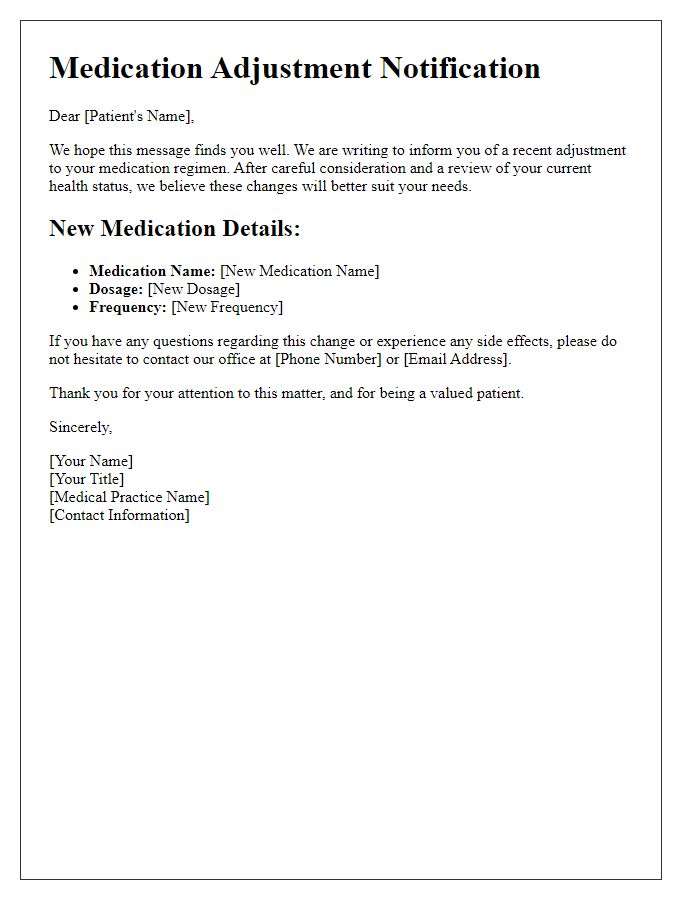
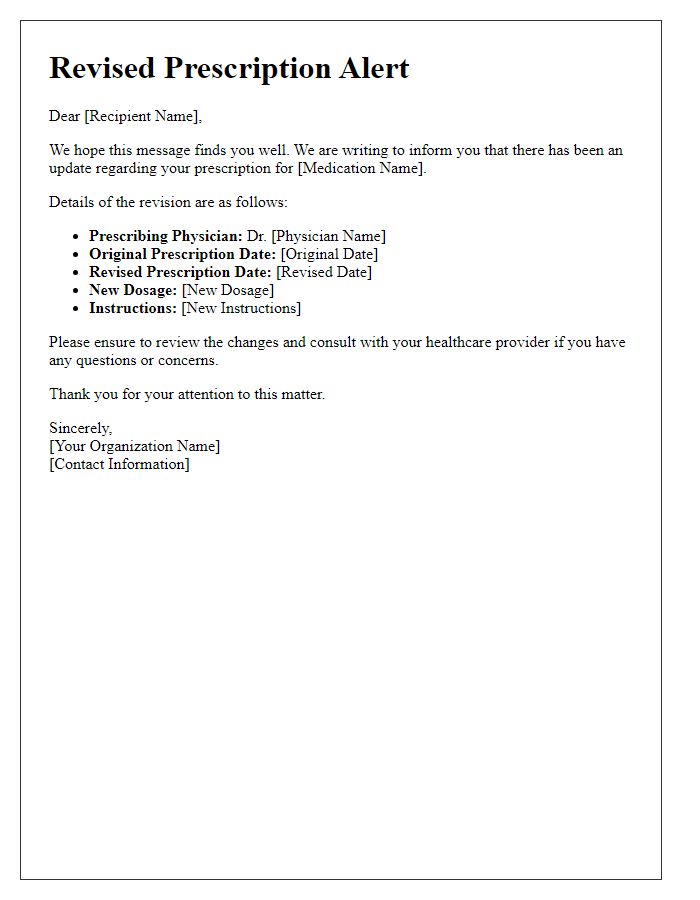
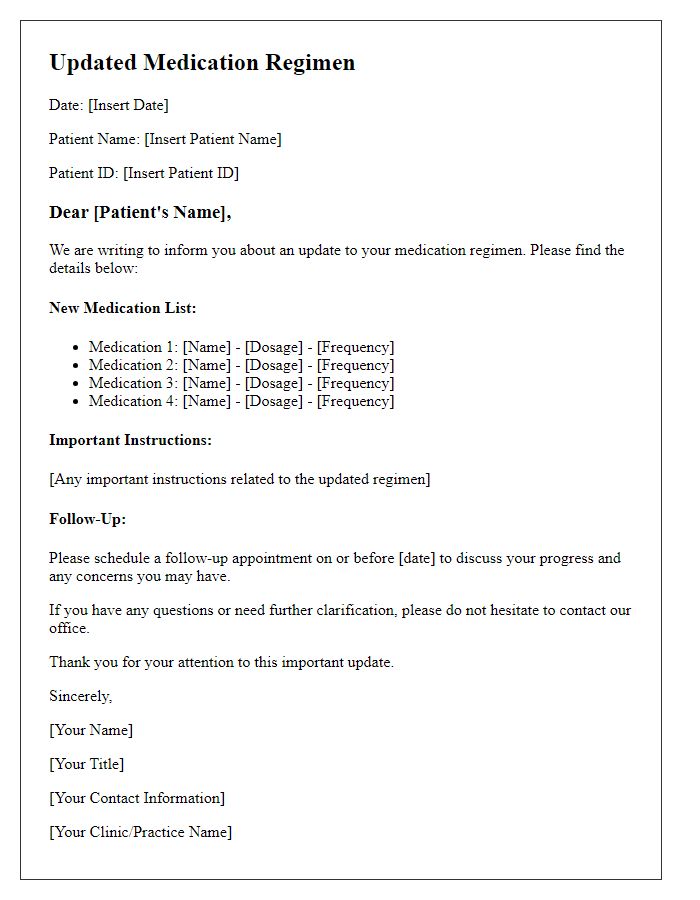
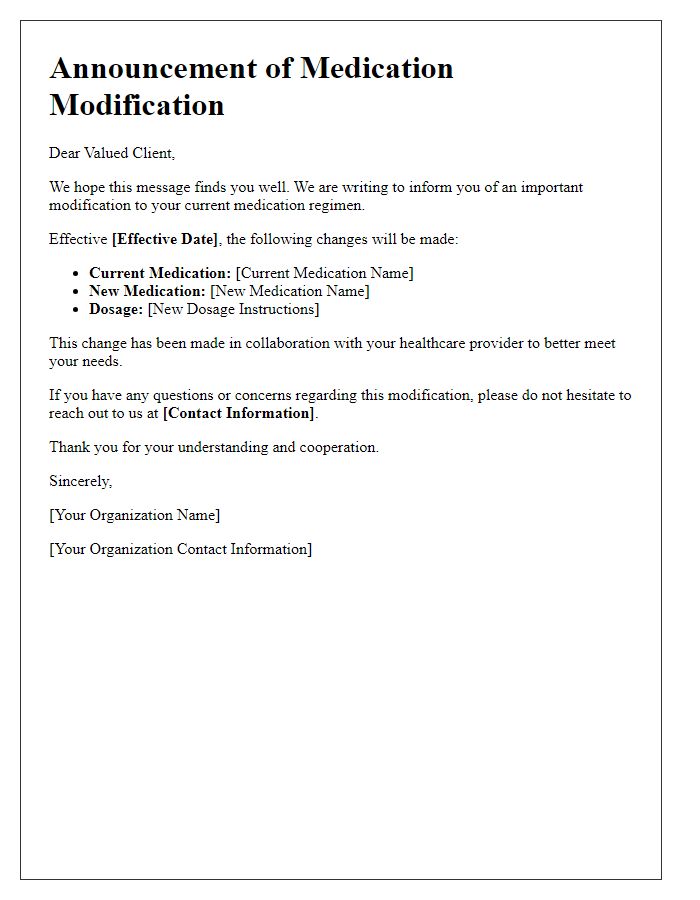
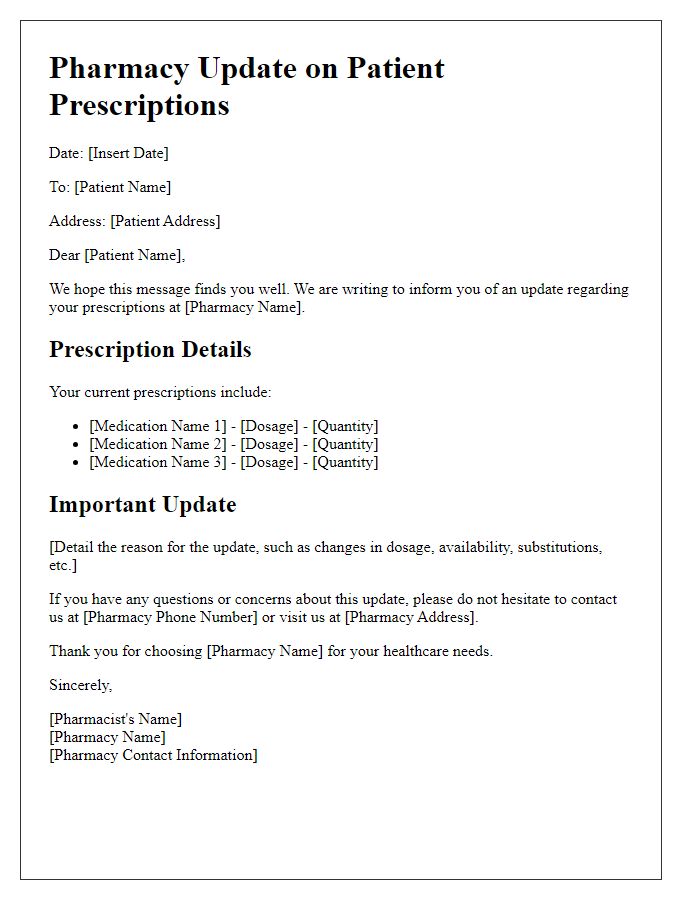
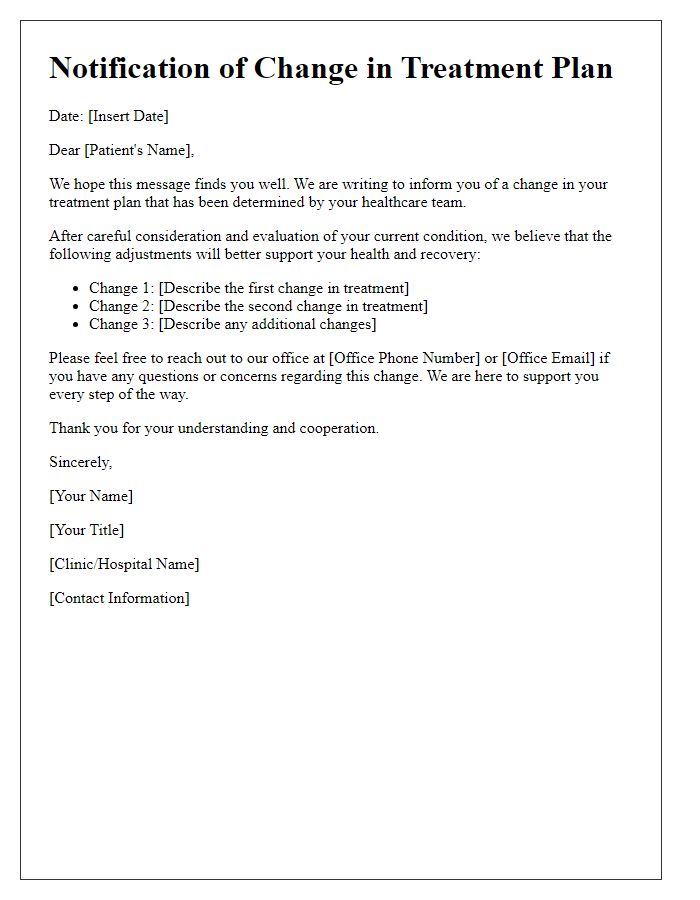
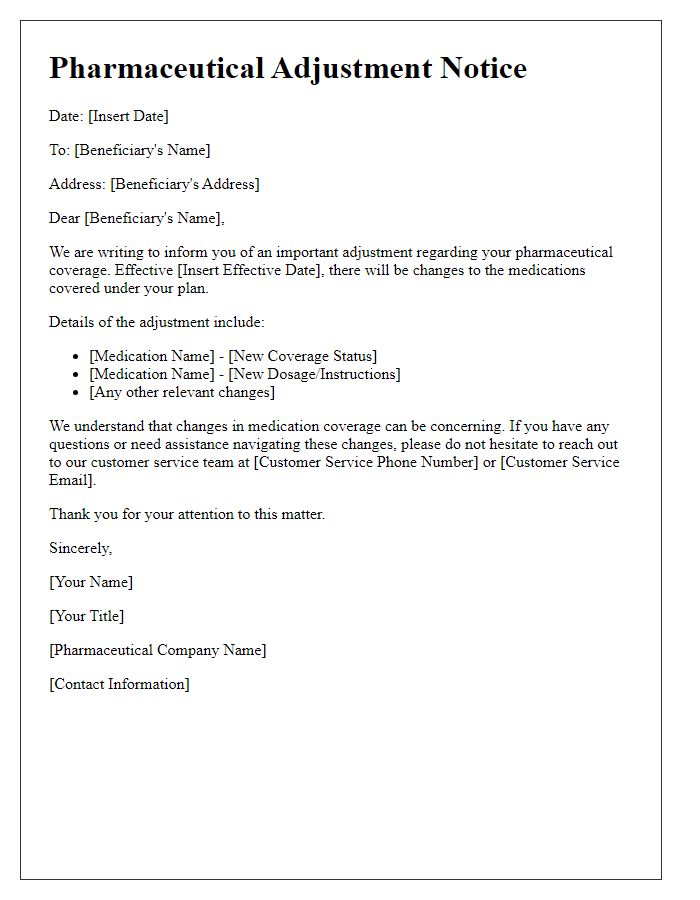
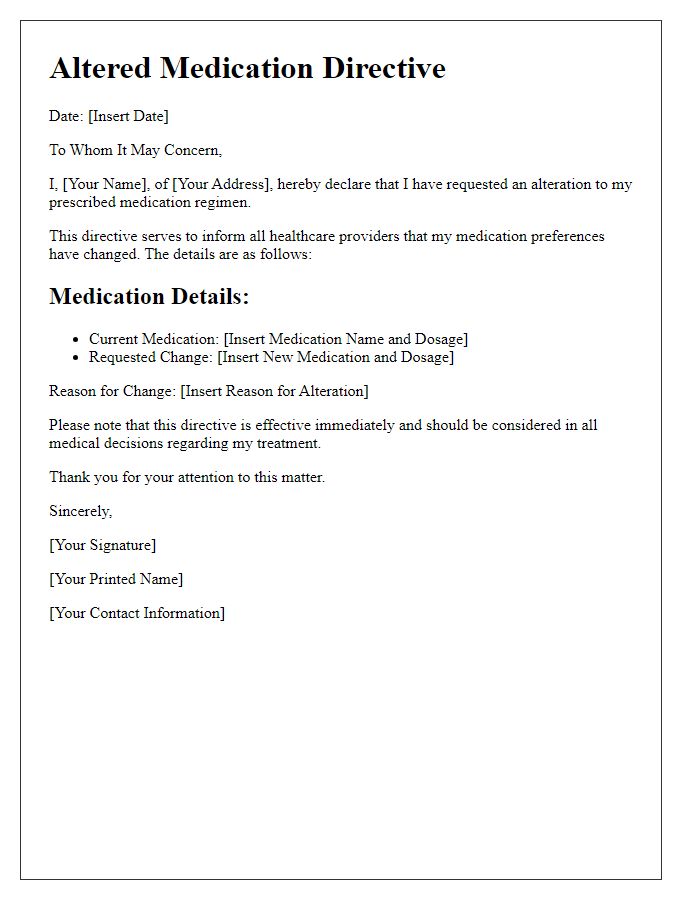
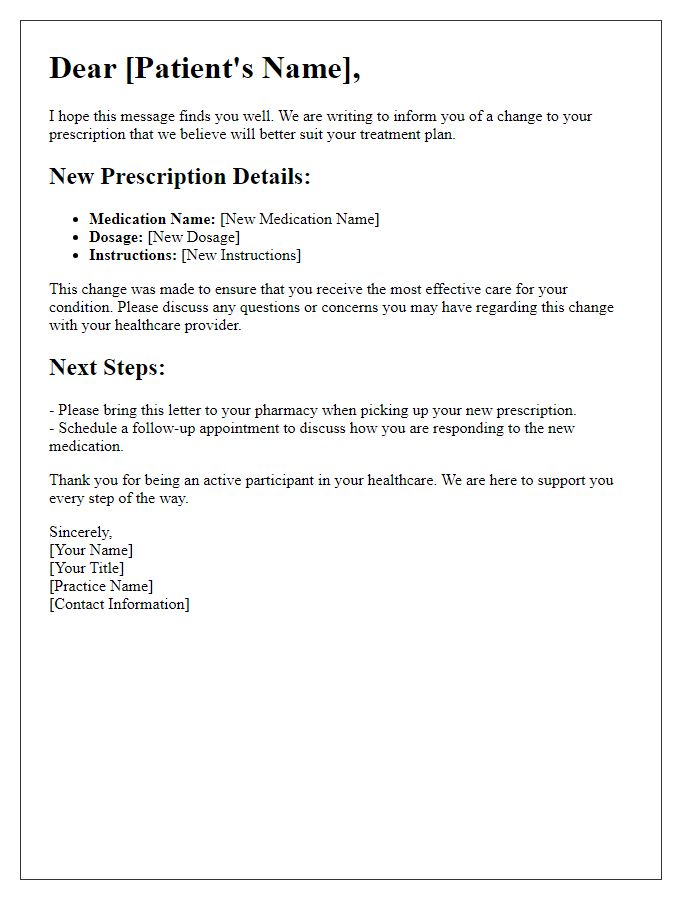
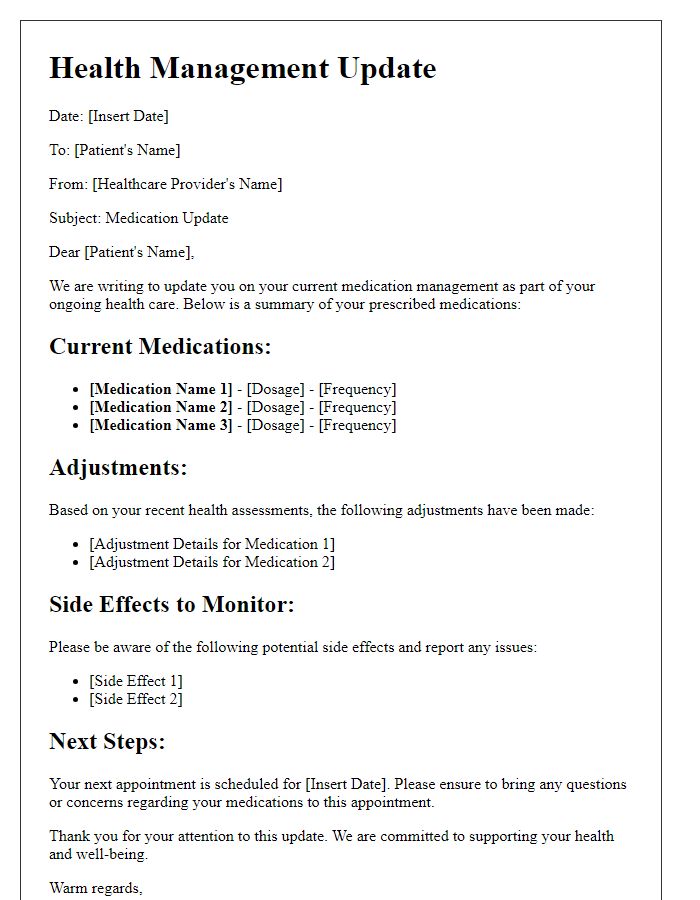

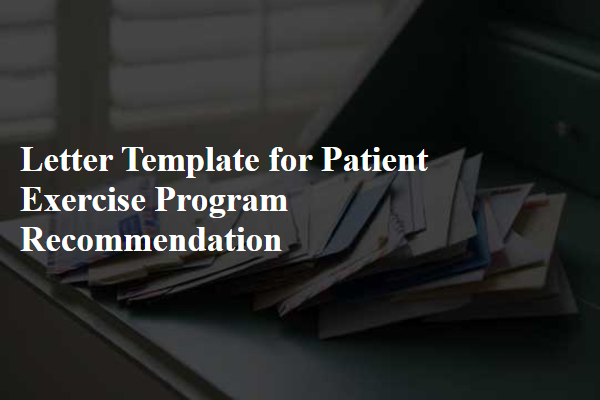
Comments